Back in the late fall last year, in one of the Puerto Rican Genealogical Facebook groups I am a part of, a link was shared to documents that could be important for genealogical research that had been updated at the time. The documents, however, are not your typical Puerto Rican Civil Registry or Registros Parroquiales records, for example. They are from the “Archivo Digital Nacional de Puerto Rico” and specifically from the “Documentos del Fondo Gobernadores Españoles – Digitalizados- Colección Walter A. Cardona”.
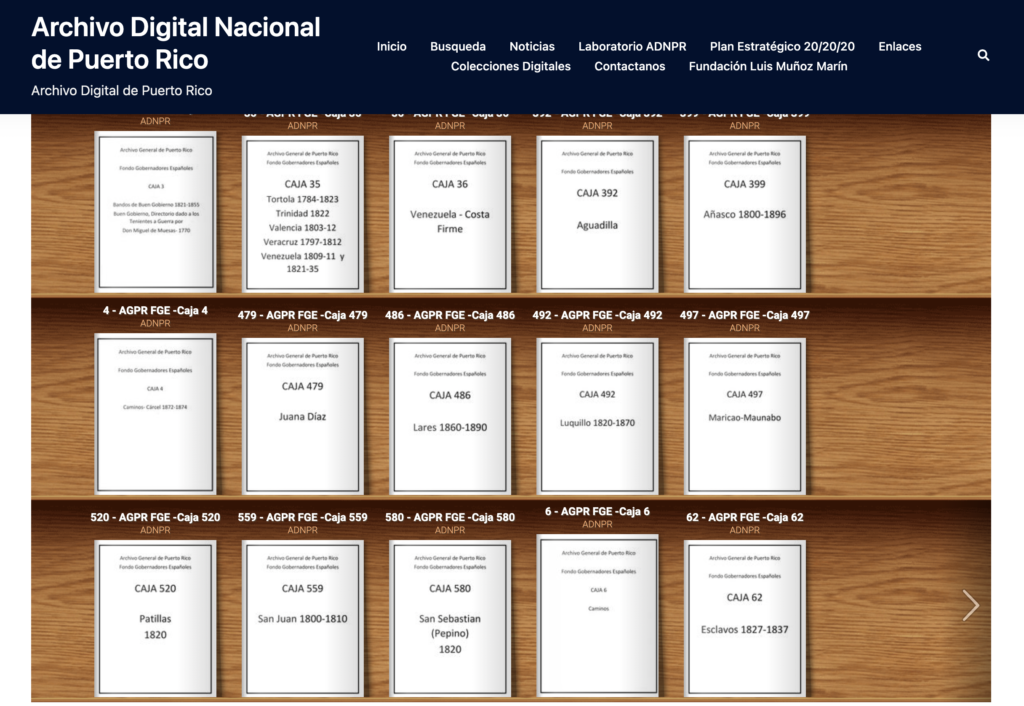
The records vary wildly and not all of the towns are available. I did notice though that there was a folder for “Maricao-Maunabo” under “Caja (Box) 497″. So I decided to check them out and see if there was anything that could be interesting. My family had been in Maunabo much longer than I originally knew prior to research, so I figured there could potentially be important information in this box that could help me learn more about their time there.
Specifically, I wanted to learn more about the Dávila family who originated from San Juan del Puerto, Spain. Originally they lived in Coamo but the family later moved to Maunabo and remained there until the 1870s when the family then moved from Maunabo to Yabucoa. From Yabucoa the family then moved to San Juan in the late 1940s.
Given the lack of death records in Maunabo (both on FamilySearch and at the actually church itself according to the phone call I had), I wanted to see if there were other type of records that might shine some light on my 6th great-grandfather; who I have been able to research in Puerto Rico and have likely found as well in San Juan del Puerto, Spain but I am missing the link between both sides of the Atlantic to firmly say I have the right man.
Though I did not exacly find what I was looking for, I was able to find some interesting information, nonetheless.
Caja 497 - Maunabo
Specifically when looking at the Maunabo records I wanted to find any mentions of “Dávila” or “Cantos”. The earliest mentions I found for the Dávila-Cantos family is in the 1817 with a list of Milicias (militia).
Bartolomé Dávila Cantos-
Earliest document
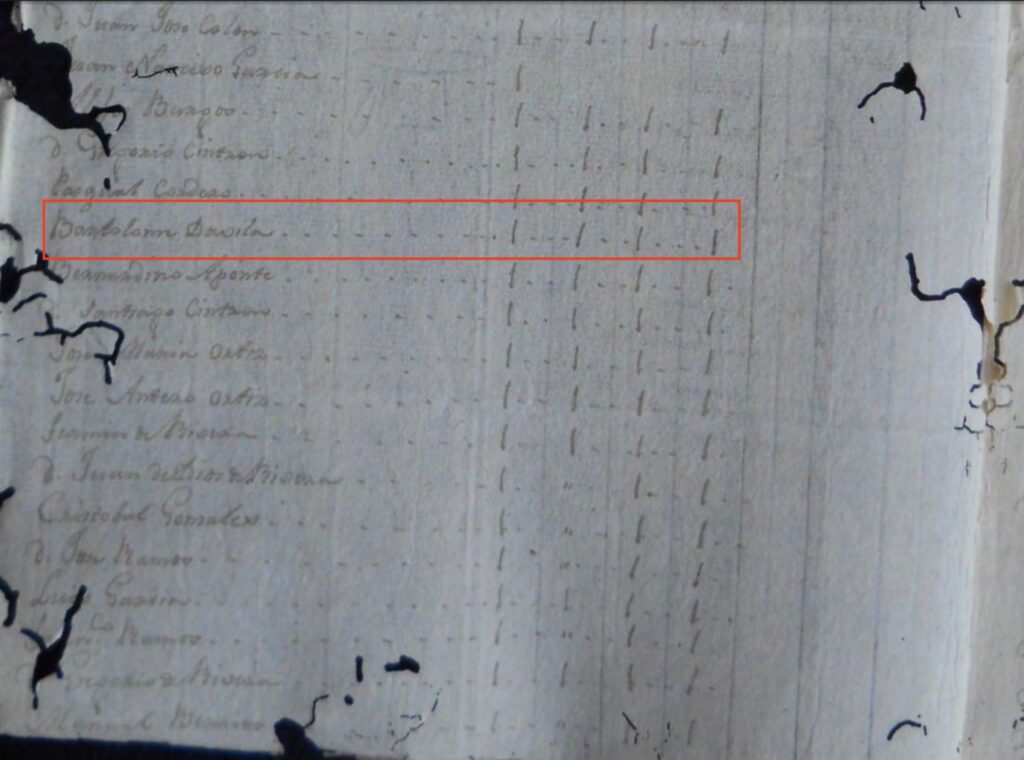
In the list above you can see Bartolomé Dávila, appearing in the urban militia list and as blanco (white). Bartolomé is listed as having one of each weapon, which is interesting to see because I personally never think about the weapons an ancestor might have been in possession of. Having him appear on this list confirms his racial identity and the fact that he was living in Maunabo.
Interestingly enough, the next man listed is “Bernardino Aponte” and despite him not being a Dávila-Cantos, he did marry one. Bernardino Aponte Ramos married Marcelina Dávila Cantos in 1806 in Coamo, this family also had moved to Maunabo as well.
Latest Document
The latest document, or really lack their of, is a list of subsidy distribution in Maunabo in 1837. In the list appear Rafael Dávila and Estanislao Dávila, who are both the sons of Bartolomé but he himself is not on the list. This does not necessarily mean he has died but it can give us a hint that around this time he could have passed away. Especially since this is also the first time two of his sons appear on the list – could they have come forward in his place? If he did however die before this list then likely Bartolomé died in the year itself – 1837 based on other evidence.
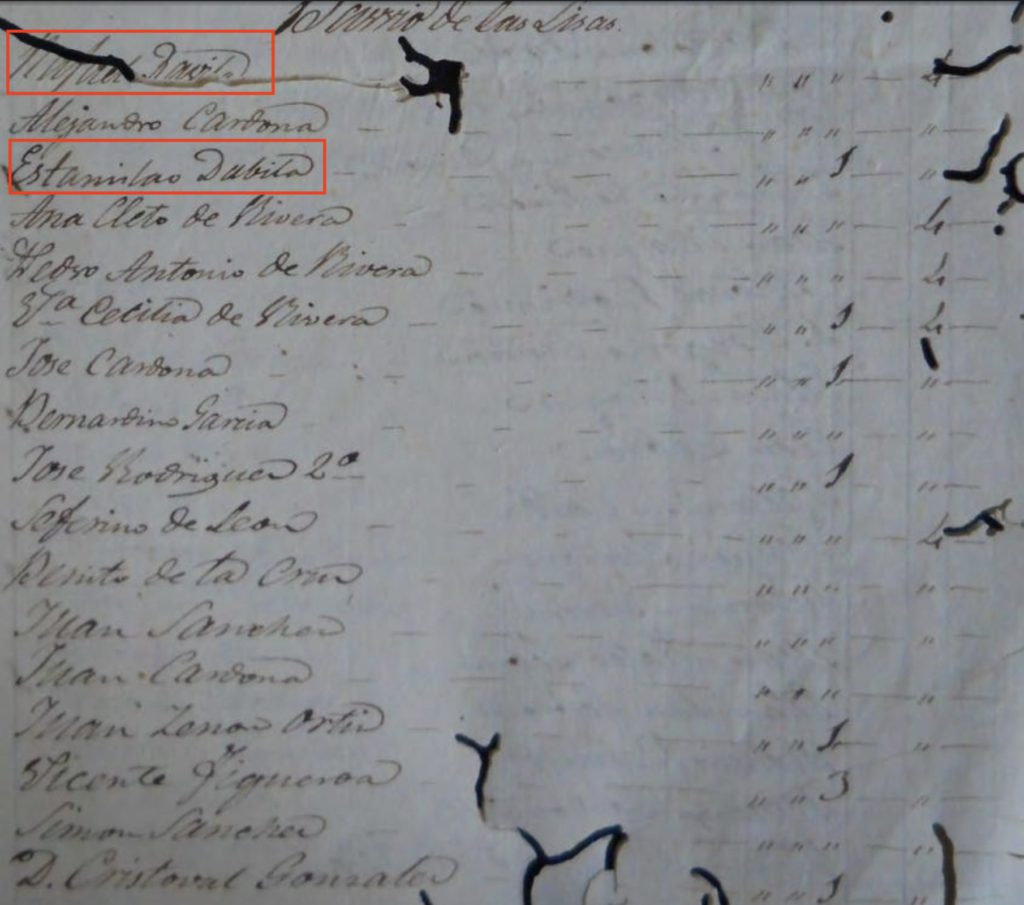
It’s interesting also seeing what barrio (neighborhood) they lived in because many from this generation lived before the 1885 Puerto Rican Civil Registry, and so rarely do you see any mention of barrios in their records. Barrio Lizas borders the west with Patillas and the north with Yabucoa.
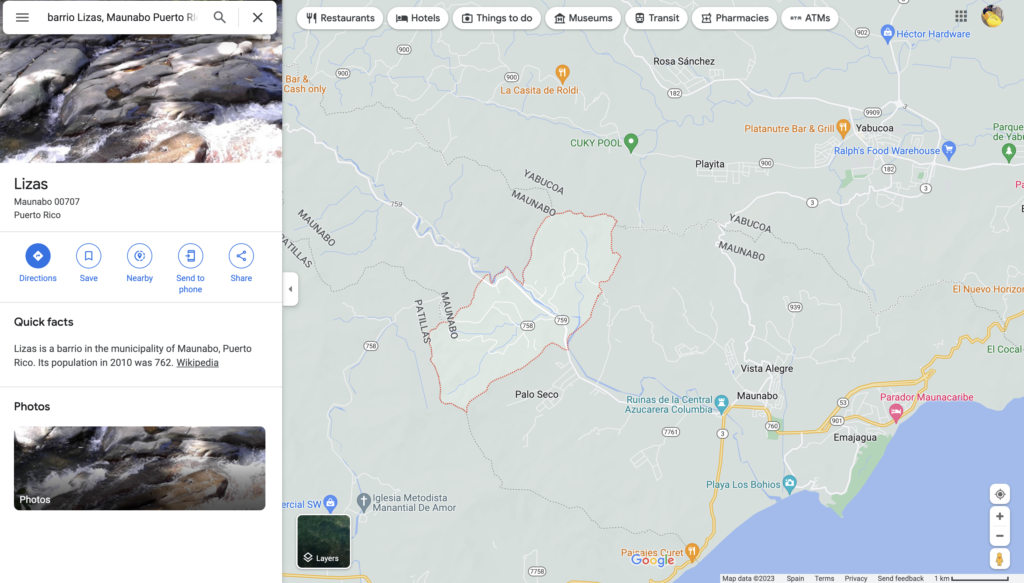
José Dávila CAntos-
Earliest Document
The next person I want to mention is José Dávila Cantos, Bartolomé’s father. Besides the baptisms of his children, I actually do not have documentation for José himself in Puerto Rico – currently I have no marriage and no death record. This is what makes confirming his identity in Spain an issue, since José was born abroad he would have likely immigrated alone and/or have very limited family in Puerto Rico, a part from the one he later began. Similar to Bartolomé, José appears on a militia list, however he appears as “retired”.
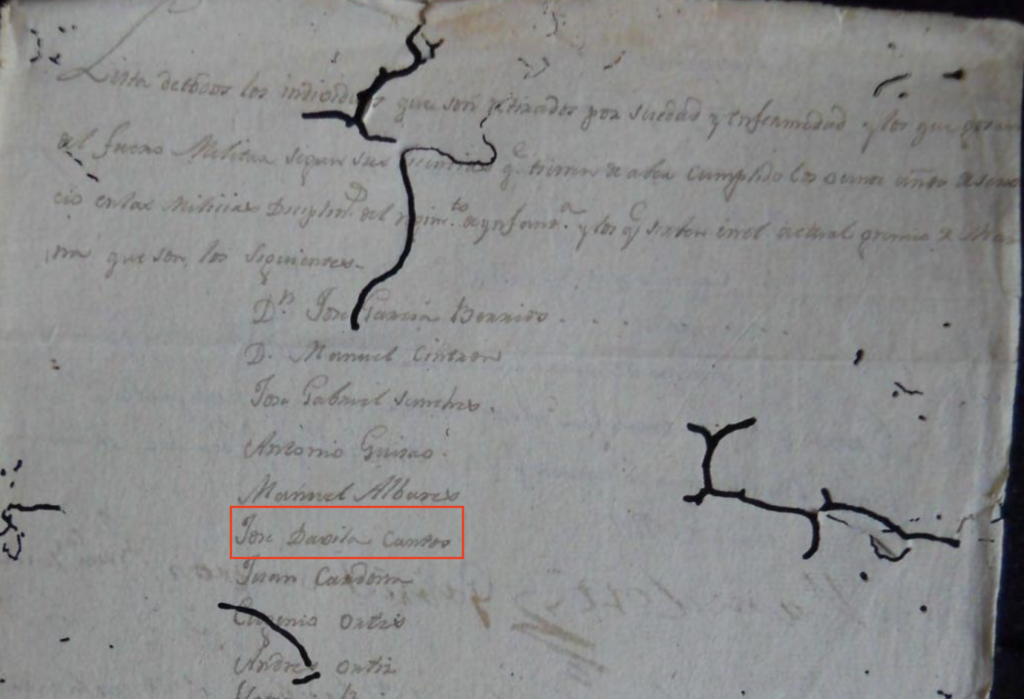
José appears using both surnames “Dávila Cantos” which he typically used in Puerto Rico. We are not sure if either it was his age or his health that gave him the status of “retired”, however if we base his age on the baptism record found in Spain, this would place him at 70 years old. Even using Bartolomé’s baptism of 1775 and estimating his age to be in the early 20s when his son was born, that would still give José about roughly 60 years of age. So I am guessing that is likely his age that retired him.
Latest record
Despite being retired and older, José continues to appear on records up until 1825.
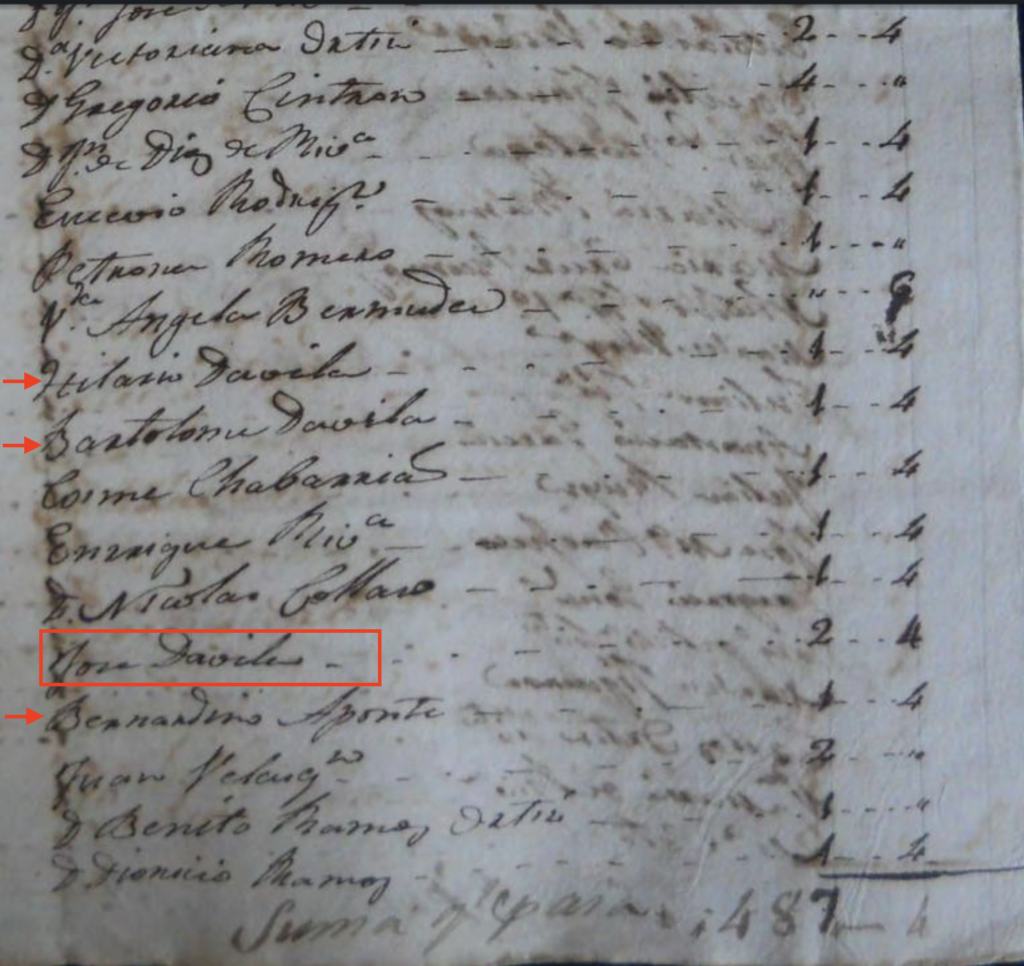
In the record above, José appears listed not too far away from his children Hilario Dávila and Bartolomé Dávila while also being listed next to Bernardino Aponte, his son-in-law. I have noticed that a lot of the times the people appear in the same pattern on the lists, no idea yet why/how these lists were formed and/or why they appear in this almost same order.
An extra clue...
Vda Josefa García
Luckily in 1827 there was another reparto (distribution) and this time José Dávila Cantos does not appear on the list, but his wife listed as vda [viuda] (widow) appears!
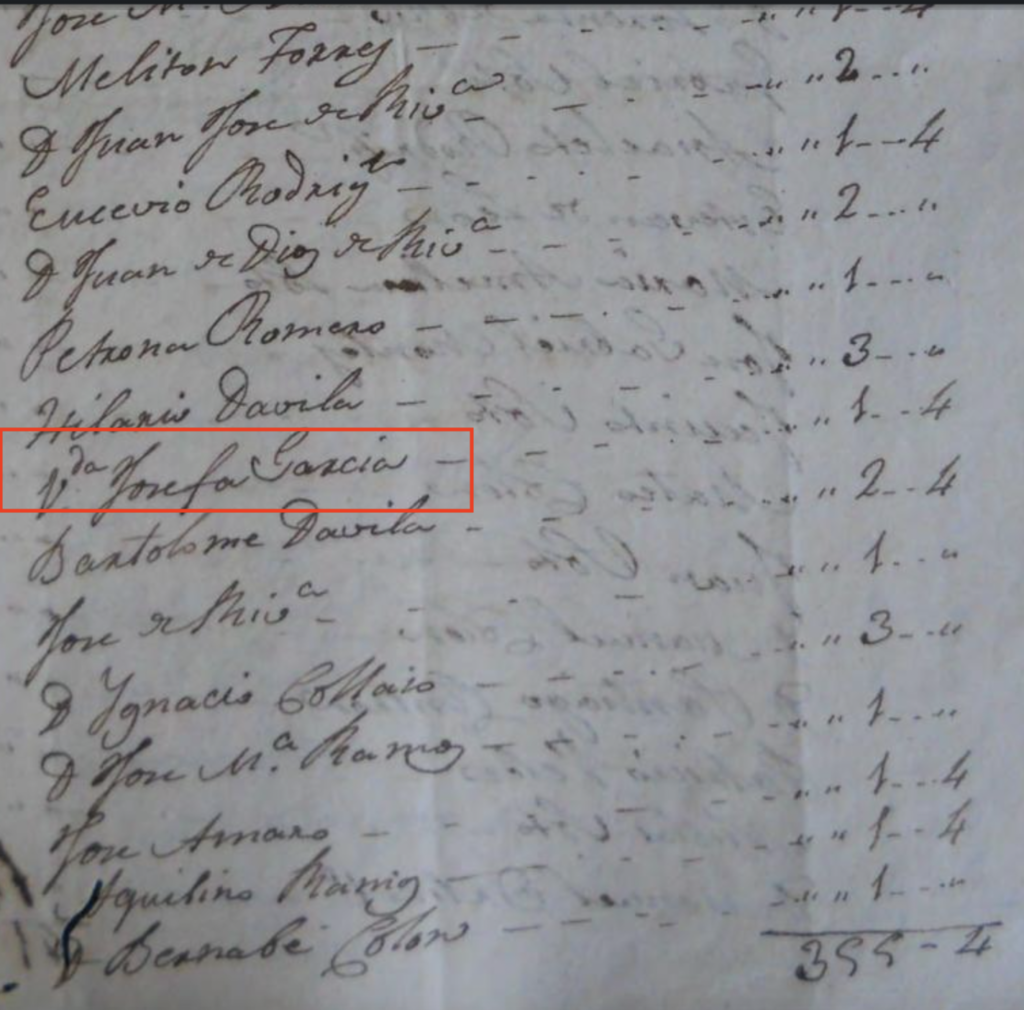
This would mean that José Dávila Cantos died sometime between January 1825 and February 1827! It is quite amazing that I was able to lower the possible range for death date to just two years – quite a feat without using genealogical records I am used to!
Conclusions
Sometimes we need to look in unexpected places to learn new information we otherwise might not be able to find. Since Maunabo does not have any death records, the odds of me finding José’s death record is low. However, knowing that he passed between 1825-1827 allows me to hopefully narrow my searches when looking for other documents that might contain more information, like what I was able to do with el Archivo Digital Nacional de Puerto Rico.
There are other ancestors listed in these documents, for example, from my Martínez Soto line and my Ramos Delgado line – both families that originated in Guayama and later moved to Maunabo.
It is important to explore “non-traditional” documents in genealogy because you never know what you will find!

